8 Tricep Dip Variations – How to Do a Tricep Dip – Illustrated Guide
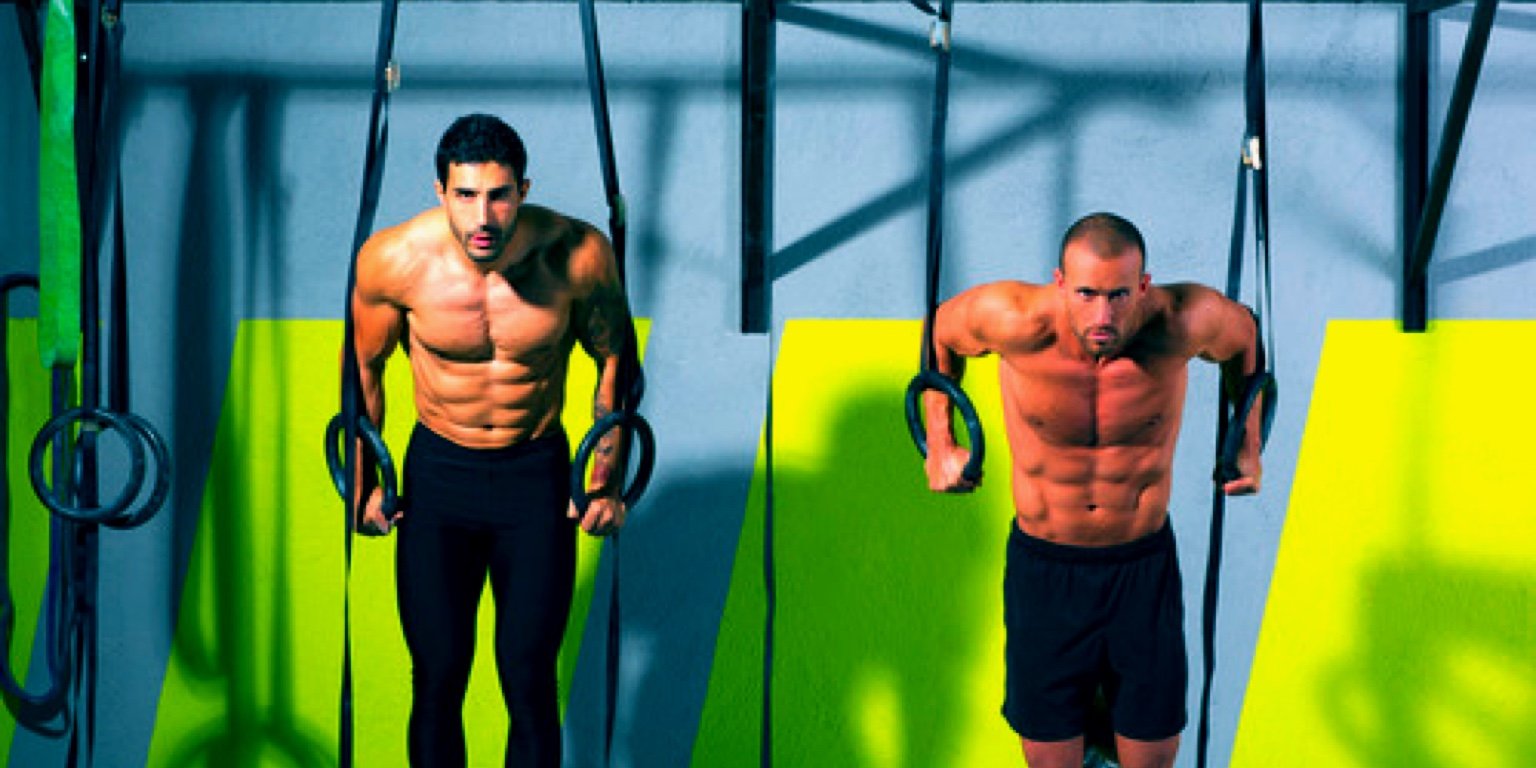
The tricep dip is a bodyweight exercise that focuses on your upper body and your triceps in particular. It sees you hold onto a bench, parallel bars or gymnastics rings, then lower and raise your body by bending and straightening your arms.
Jump to
- Tricep dips
- Parallel bar dips
- Ring dips
- Floor tricep dips
- Gironda dips (Wide grip tricep dips)
- Seated machine tricep dips
- Butterfly dips
- Feet elevated tricep dips
Tricep dips vs other tricep exercises
There are many triceps exercises you can choose from. This includes the three key tricep isolation exercises - tricep extensions, tricep kickbacks and tricep pushdowns - that specifically target your triceps.
Unlike those isolation exercises, tricep dips are a compound exercise, meaning they target multiple muscle groups at the same time. As well as your triceps, dips also work your anterior (front) delts and pectoral (chest) muscles, too.
But how does the tricep dip compare to these exercises?
- Tricep dips vs tricep extensions - Tricep extensions are typically performed with a dumbbell, barbell or a cable machine. Tricep dips, however, don't need any gym equipment because you workout using your own body weight. This makes tricep dips suitable for at-home workouts.
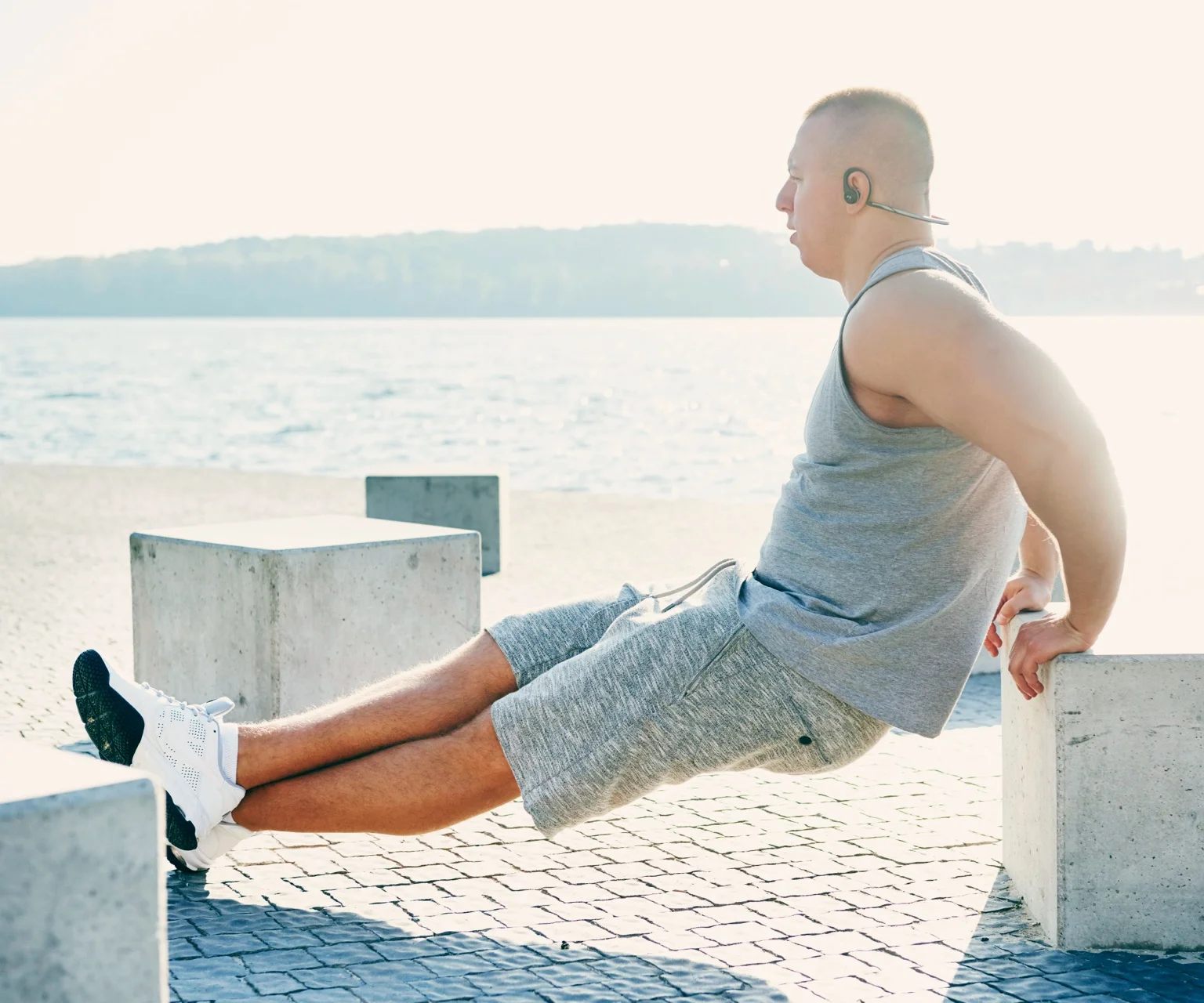
- Tricep dips vs tricep kickbacks - The tricep kickback isolates your triceps without much engagement from other muscle groups. While this is beneficial for emphasizing your triceps, it doesn't help your overall upper body strength. Tricep dips, on the other hand, work your triceps as well as your shoulders and chest muscles.
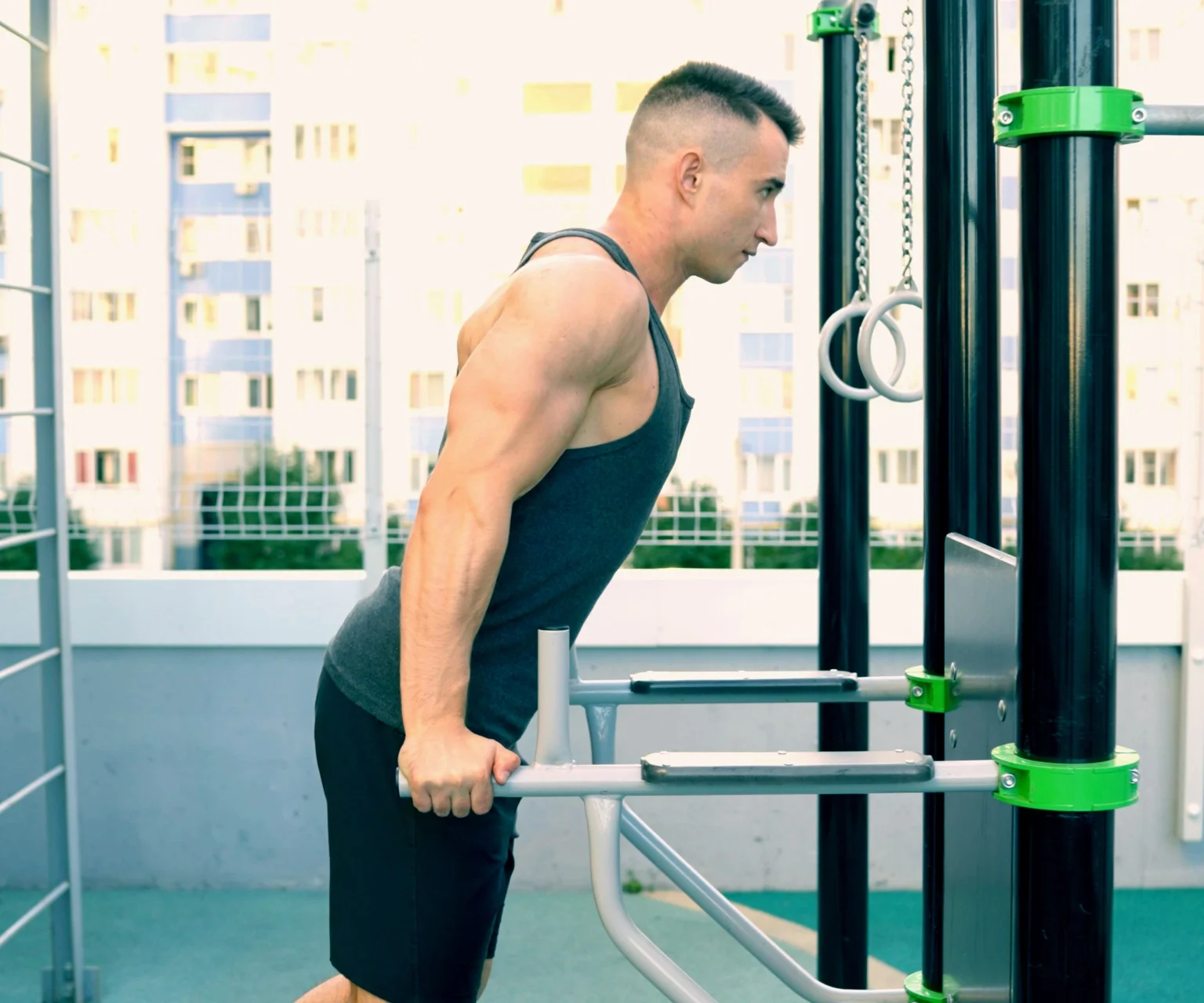
- Tricep dips vs tricep pushdowns - Tricep pushdowns, like kickbacks, also isolate your triceps. But they don't engage your core or lower body. Tricep dips, however, engage multiple muscle groups and require balance and full-body control, making it a more comprehensive exercise.
Muscles worked
Triceps
The tricep dip primarily targets your triceps muscle. Your triceps are at the back of your arm, and play a particular role in pushing movements. The triceps have three heads, known as the long head, the lateral head, and the medial head.
- Long Head – The long head of your triceps originates from your scapula. This head helps with extension at the elbow and also adduction and extension at the shoulder joint. It runs down the back of your arm to your ulna (the long forearm bone).
- Lateral Head – The lateral head originates from your humerus. It is positioned on the outside of your upper arm and gives your tricep its unique ‘horseshoe’ shape and width. It inserts into the olecranon process of the ulna. The lateral head allows rapid and forceful arm extensions, and is key in any pushing or punching movement.
- Medial Head – The medial head originates from your humerus to your ulna, and plays a key role in precision movements and stability.
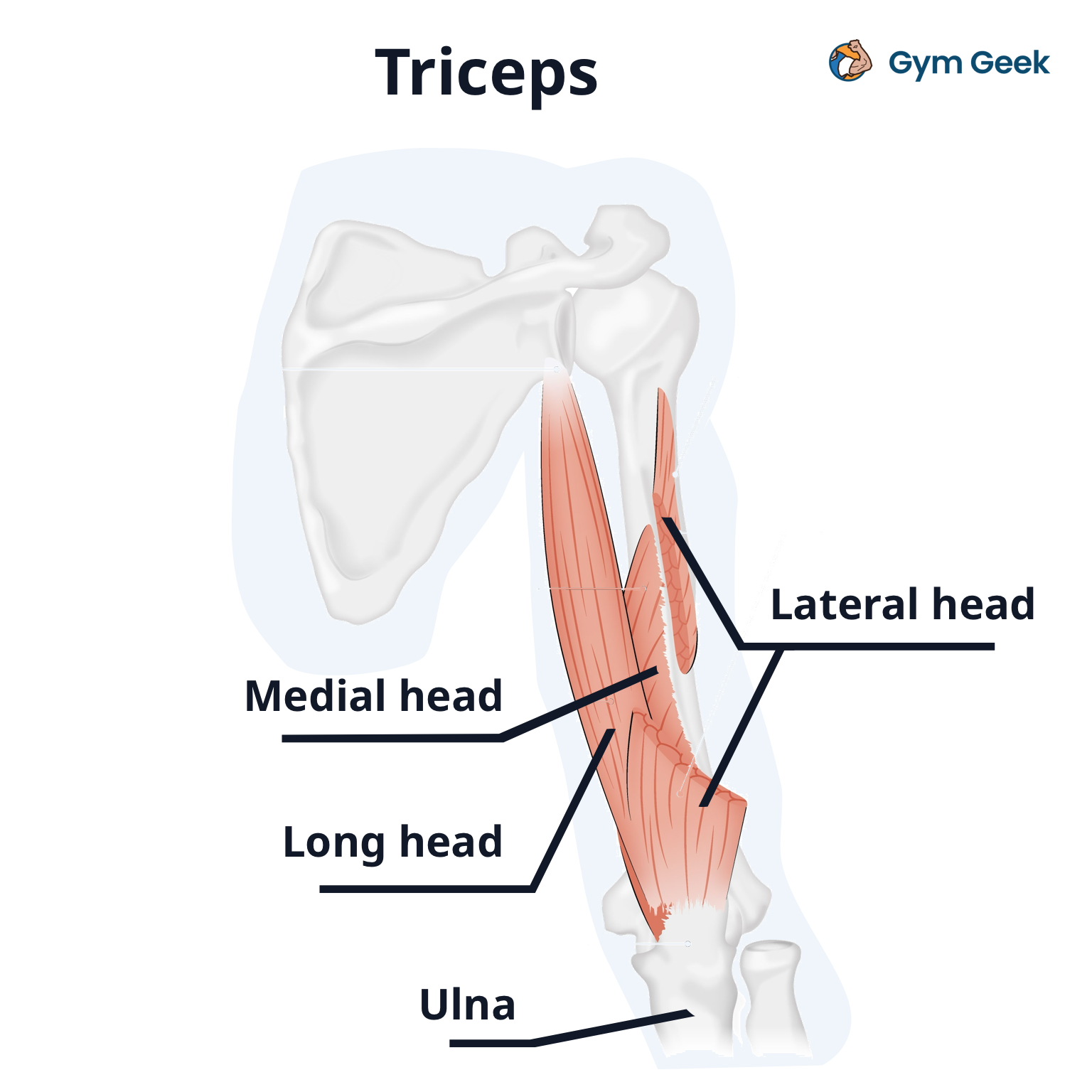
The triceps are primarily responsible for the extension of the elbow joint, which allows the arm to straighten.
Tricep dips are equally effective at targeting the lateral, medial and long heads of your triceps muscles.
Anterior (front) delts
Your anterior deltoids, also known as front deltoids, are one of three parts of your deltoid muscles. They are located at the front of your shoulder and are engaged when you move your arm upward in front of your body. Strengthening your front deltoids can improve your shoulder stability and enhance your performance in everyday pushing, lifting or throwing movements.

Tricep dips target your anterior deltoids as a secondary muscle. To put more emphasis on your shoulders, as well as your triceps, ensure you maintain an upright posture while performing the exercise. Leaning forwards will put less emphasis on your shoulders.
Chest muscles
The primary muscles in the chest are the pectoralis major and pectoralis minor. The pectoral muscles (commonly known as pecs), are the large, fan-shaped muscles in your chest. The muscles are responsible for the movement (adduction) of your shoulders and arms. The pecs are also important for maintaining good posture of your torso.
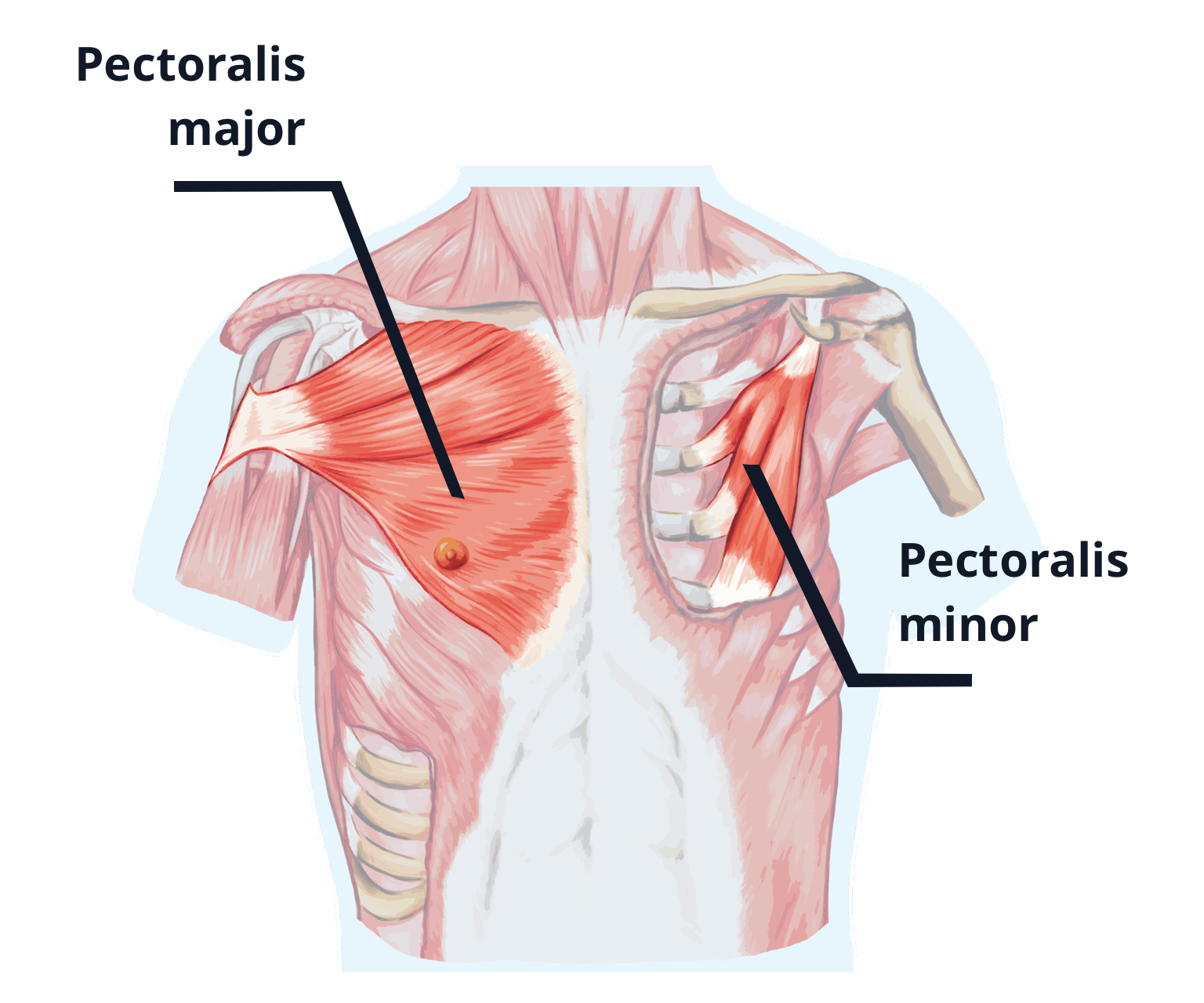
The pectoralis major is the larger of the two, covering most of your chest area. It’s responsible for the movement of your shoulder joint. The pectoralis minor is a thin, flat muscle located underneath the pectoralis major. It helps move your shoulder blade.
Performing the tricep dip with a lean forwards will place more emphasis on your chest muscles.
Tricep dips
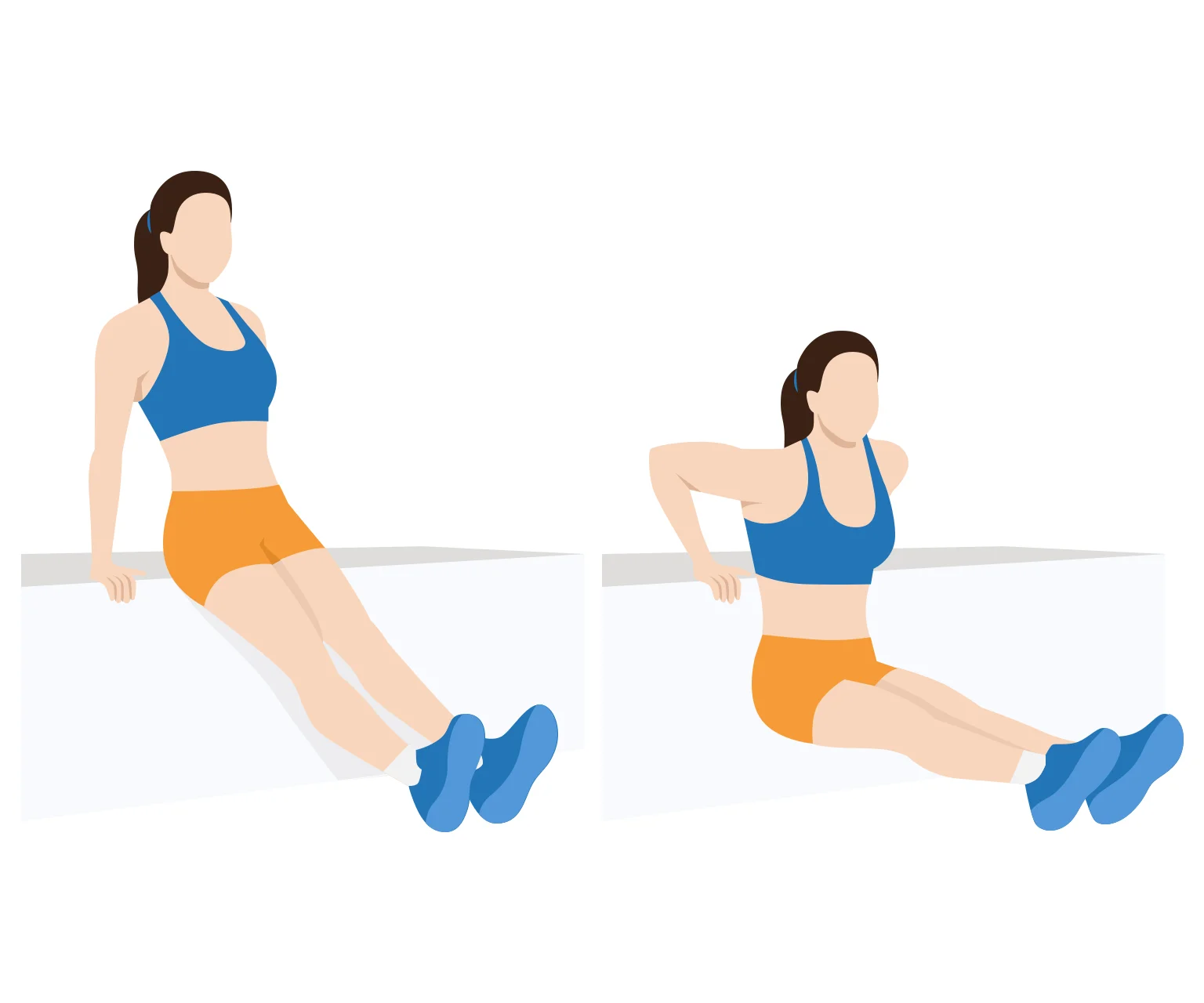
Tricep dips primarily target your triceps (the muscles on the back of your upper arms). It also works your shoulders and chest as secondary muscles.
Bench tricep dips are the traditional form of dips, where you hold onto a training bench or chair, while your feet are planted on the floor. You slowly lower and raise your body, using your own body weight for resistance.
The tricep dip is an excellent way to build upper body strength and improve muscle tone in your arms. You can consider adding this exercise to the chest and tricep workout, push day workout or bodyweight at-home workout.
How to do
- Sit on the edge of a training bench with your hands placed next to your hips (fingers pointing forwards).
- Walk out your feet and slide your butt off the bench. Keep your legs extended.
- Now, lower your body down towards the ground by bending your elbows. Keep going until your elbows are at a 90 degree angle.
- Finally, push through your palms to lift your body back up to the starting position. Do not lock out your elbows.
- Repeat for the desired number of reps.
Sets and reps
The number of sets and reps depends on your fitness level. If you're new to training, you might start with 1-2 sets of 8-12 reps. As your strength improves, gradually improve the sets to 3-4 to add more frequency and volume to your workout.
Parallel bar dips
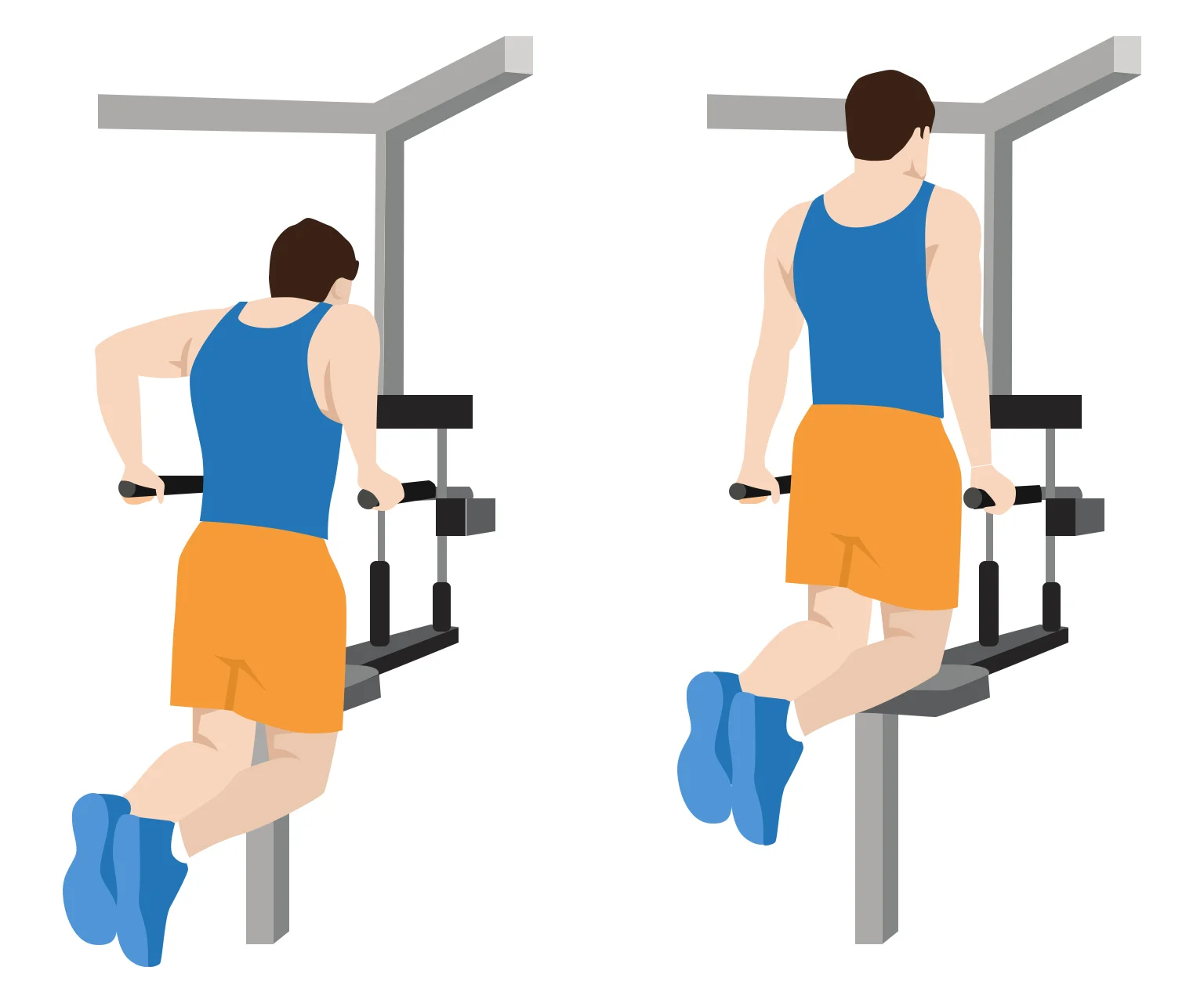
Parallel bar dips require more strength because you lift your entire body weight off the ground. This makes it more challenging that bench dips where your feet are on the floor, which supports some of your weight.
This variation allow uses a greater range of motion which makes your workouts more efficient at building tricep and upper body strength.
How to do
- Position yourself on the parallel bars, gripping them firmly with your hands.
- Push yourself up by fully extending your arms, but without locking your elbows.
- Lower your body slowly while leaning forwards slightly. Lower until your elbows at a 90 degree angle. Keep your elbows close to your body through the entire movement.
- Finally, push yourself back up to the starting position.
- Repeat for the desired number of reps.
Ring dips
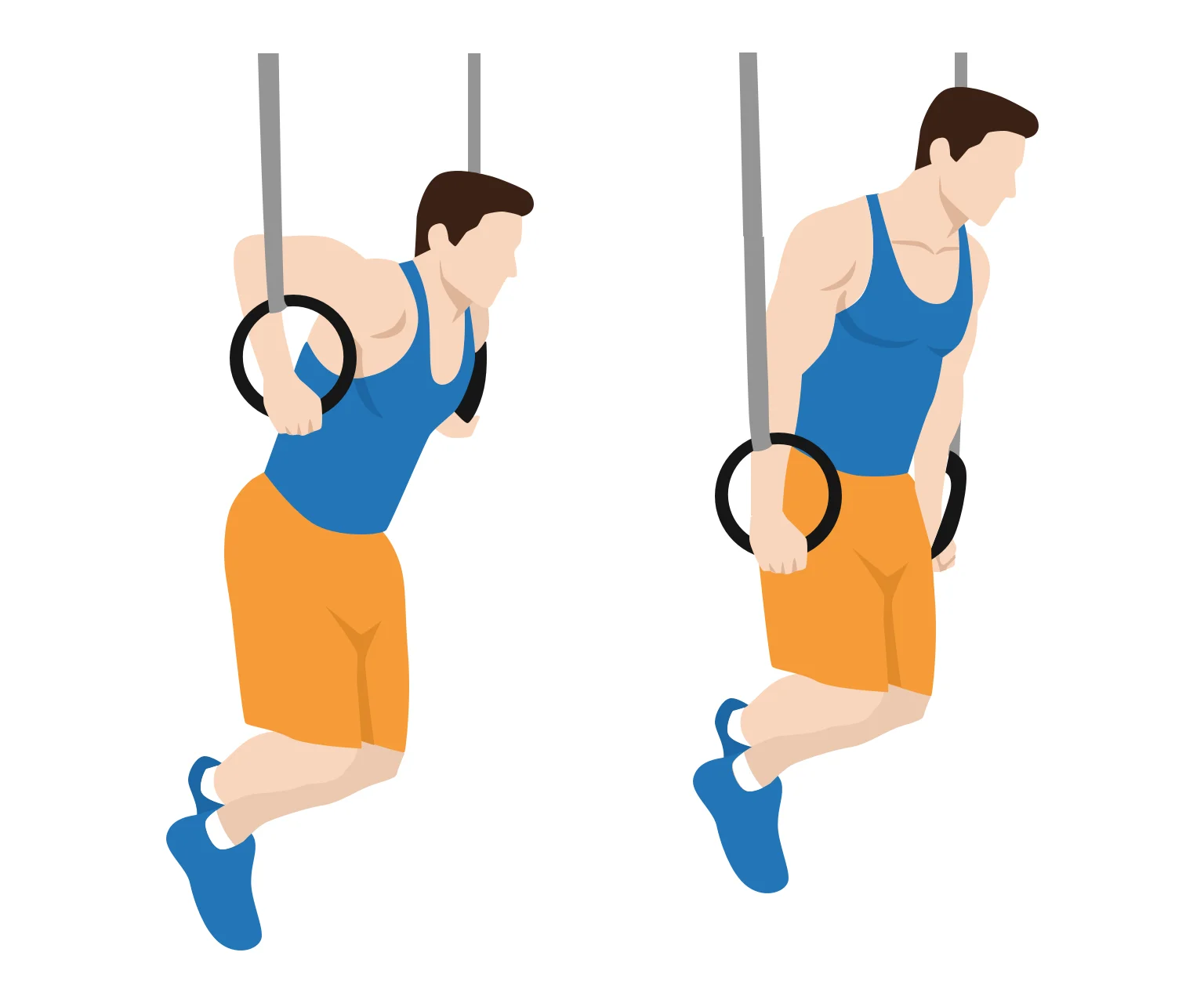
For even more challenge, you could use gymnastics rings rather than fixed parallel bars. The rings make the exercise unstable and so demands greater stabilization and control through the movement.
This variation is a great choice if you want to train your core and shoulder stabilizers. Beginners may find the ring dips too difficult.
How to do
- Adjust the rings to waist height.
- Grip the rings and raise your feet away from the floor.
- Lean forward slightly and lower your body by bending your elbows. Keep lowering until your elbows are at a 90 degree angle. Keep your elbows close to your body through the entire movement.
- Finally, push yourself back up to the starting position.
- Repeat for the desired number of reps.
Floor tricep dips
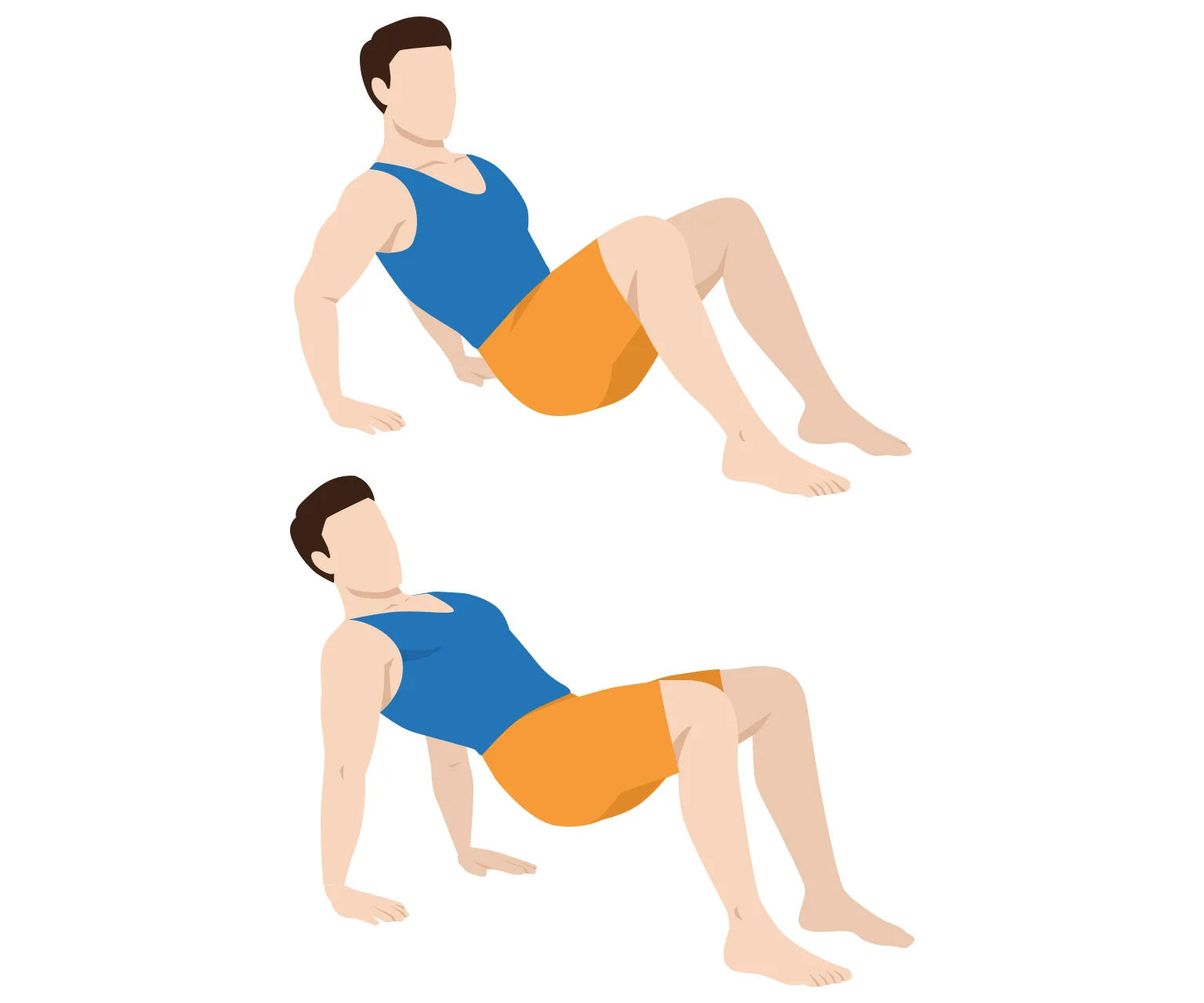
Floor tricep dips are another easy-to-perform variant, where your body weight is distributed through your arms and feet. The range of motion for your triceps is less than with bench dips, where your upper body is raised off the ground. As a bodyweight exercise, you can do it anywhere without any special equipment.
How to do
- Sit on the floor with your knees bent. Your feet should be flat on the ground and your hands should be behind you.
- Press through your palms and lift your hips off the ground. Keep your chest up and your back straight.
- Lower your body by bending your elbows.
- Finally, push yourself back up to the starting position.
- Repeat for the desired number of reps.
Gironda dips (Wide grip tricep dips)
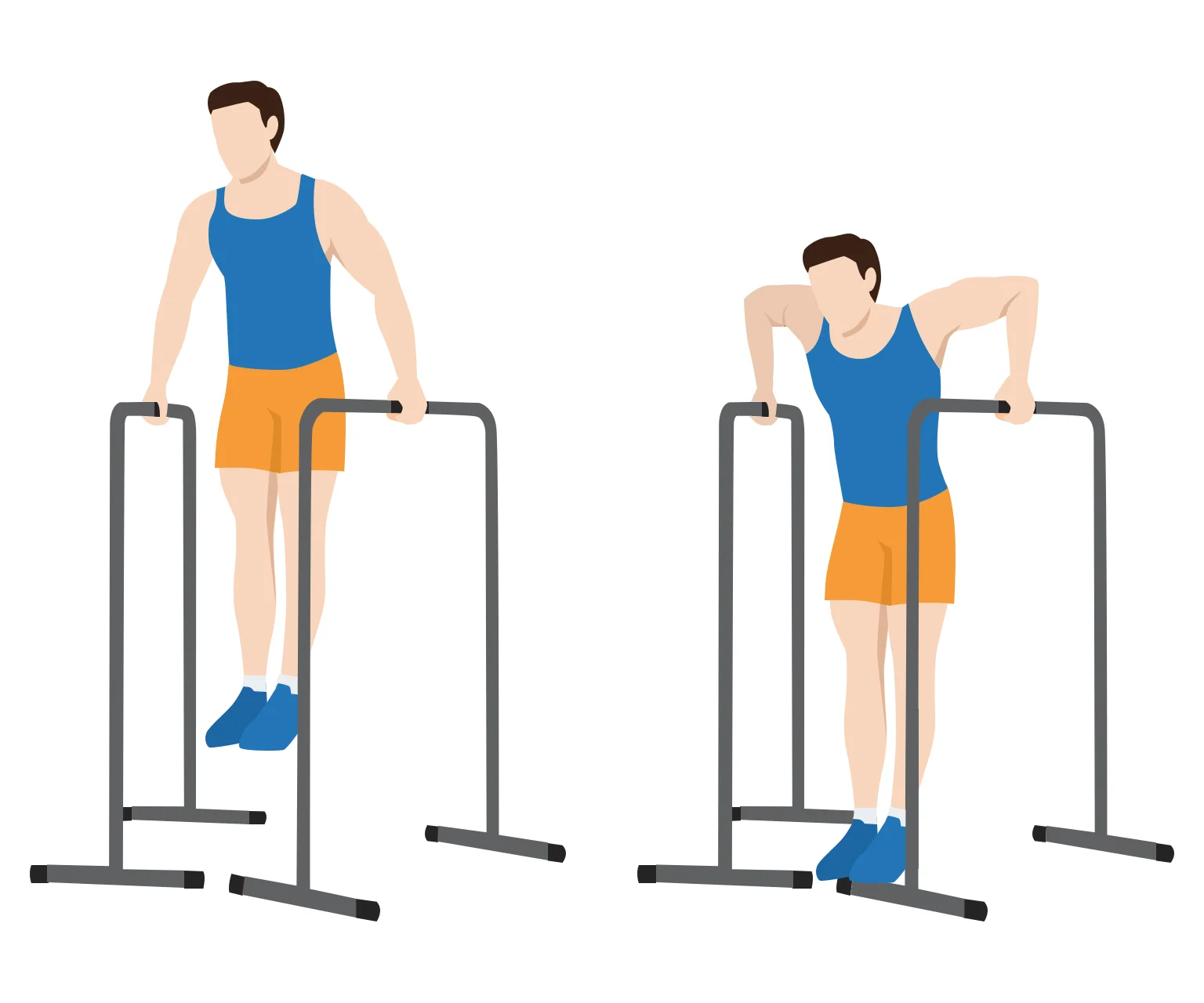
Wide grip tricep dips places more emphasis on the outer head of your triceps, as well as your chest and shoulders. This makes it an excellent variation if your goal is to build stronger and bigger triceps.
How to do
- Position yourself on the parallel bars, gripping them firmly with your hands.
- Push yourself up by fully extending your arms, but without locking your elbows.
- Lower your body slowly while leaning forwards slightly. Lower until your elbows at a 90 degree angle.
- Unlike traditional parallel bar dips, allow your elbows to flare out to your sides.
- Finally, push yourself back up to the starting position.
- Repeat for the desired number of reps.
Seated machine tricep dips

Seated machine tricep dips are performed on a special machine where you are seated and push down on a lever. This makes the exercise easier to perform, particularly for beginners. The controlled movement of the machine also reduces the risk of injury, making it a safer option for those new to training.
How to do
- Adjust the machine to your height and select an appropriate weight on the weight stack.
- Sit on the chair and grab the handles with your palms facing towards your body.
- Push down on the handles until your arms are fully extended, but without locking your elbows.
- Now, reverse the motion and lower yourself to the starting position.
- Repeat for the desired number of reps.
Butterfly dips
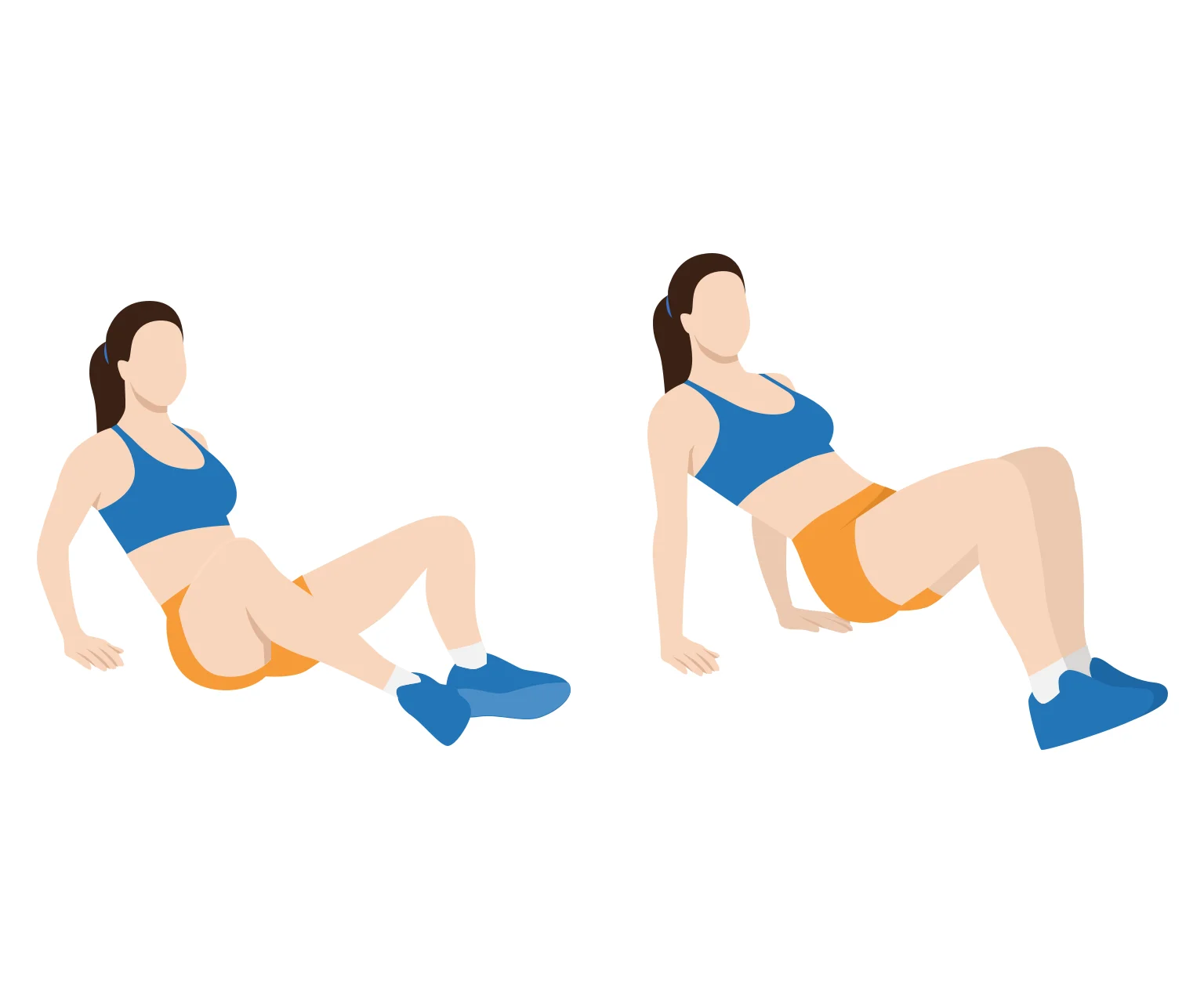
Butterfly dips combine the upper body tricep dip with some engagement of your glutes and thighs. This makes is a great variation if you are looking to strengthen and tone your lower body, as well as your arms, shoulders and chest.
How to do
- Sit on the floor with your knees flared out to the sides, creating a "butterfly shape" with your legs.
- Place your hands on the ground behind you.
- Engaging your core, lift your hips off the ground. Bring your legs together at the same time
- Squeeze your glutes at the top of the movement.
- Reverse the moment and return back to the starting position.
- Repeat for the desired number of reps.
Feet elevated tricep dips
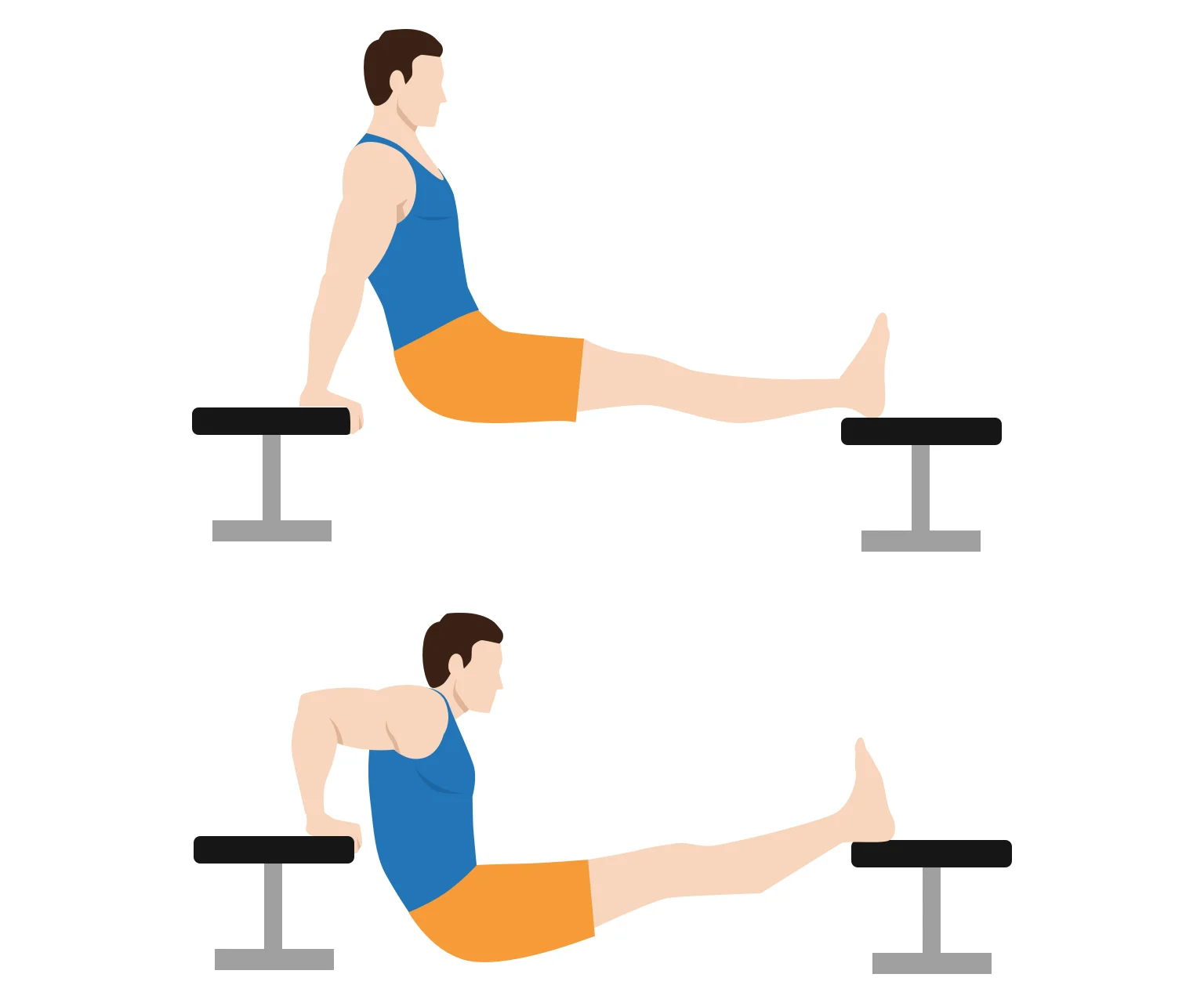
In the elevated variant of the tricep dip, your feet are raised off the ground on a bench or step. This increases the intensity of the exercise because it demands more strength and balance.
Feet elevated tricep dips help you build strength and definition in your upper body, particularly your triceps.
How to do
- Position two benches - one behind you and another in front of you at leg's length.
- Sit on the rear bench and place your hands next to your hips. Your fingers should be pointing forwards.
- Extend your legs and place your heels on the second bench.
- Lower your body by ending your elbows until they are a 90 degree angle.
- Finally, push your body back up by extending your arms. Keep your chest up and your core engaged through the entire movement.
- Repeat for the desired number of reps.
Tips
Change the range of motion
A simple way to make the exercise easier or more challenging is by adjusting the depth of your dips.
To make the exercise easier, try lowering your body halfway rather than extending fully into the dip. Or to make it more challenging, lower your body down until your elbows are at a 90 degree angle.
Add weight
If you've been doing tricep dips for a while, you can add even more challenge by adding extra weight to the exercise.
You can either hold a dumbbell between your legs or wear a weighted vest.
